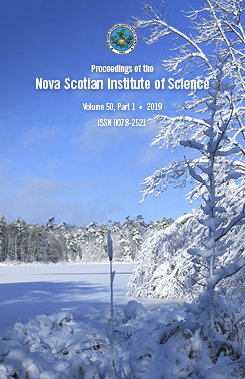The marine macroalgae of Brier Island, Nova Scotia, Canada
DOI:
https://doi.org/10.15273/pnsis.v50i1.8873Abstract
From May to October 2017 seaweeds were identified in the field and laboratory from 20 sites around Brier Island, Nova Scotia. While most sites were intertidal rocky shores, there were one small salt marsh and one eelgrass bed included in the study, and some subtidal sampling was conducted utilizing SCUBA and snorkeling. The Brier Island seaweeds comprised 152 species and varieties of which 62 were Rhodophyta, 44 were Chlorophyta, 44 were Phaeophyceae, and two species were Xanthophyceae. Three species were new records for eastern Canada: Colaconema bonne- maisoniae, C. endophyticum, and Elachista stellaris, all were pre- viously recorded from New England. The flora included eight non- native species of which Colpomenia peregrina and Bonnemaisonia hami- fera (both gametophytic and tetrasporophytic stages) were abundant at two or more sites, and the invasive Codium fragile subsp. fragile was recorded based on a single drift specimen. With 150 species and varieties of seaweeds, Brier Island has the highest species richness of a limited area of eastern Canada. The Cheney floristic index at 2.4 is higher than comparable areas, and suggests that many additional brown algae remain to be found.
Keywords: Chlorophyta, Colaconema, Bay of Fundy, Brier Island, Phaeophyceae, Rhodophyta, seaweeds


